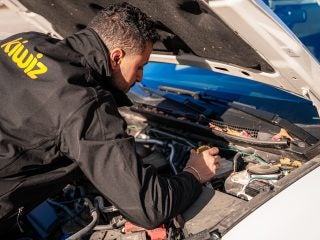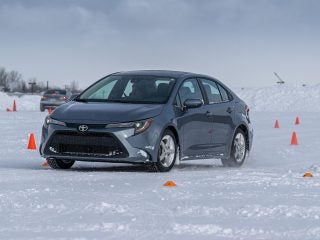Not that long ago, driverless cars seemed like something out of science fiction. But they’re a reality — whether the world is ready or not.
Companies like Tesla, Audi, Volvo, Nissan, and General Motors have already released or are planning to launch driverless vehicles. Furthermore, research and computer modeling that has been conducted by Accenture and the Stevens Institute of Technology shows that as many as 23 million fully autonomous vehicles will be on U.S. highways by 2035.
Even more interesting, a study from Quote Wizards states that thanks to autonomous fleets being employed by Uber and Lyft, it will be cheaper to rely on ride-sharing apps than owning your own vehicle by 2027.
But what will the paperwork be like for driverless vehicles? Will obtaining your title, registration, and insurance be the same? Or is it going to be completely different?
Permits for Self-Driving Vehicles
For years there have been discussions regarding how self-driving cars are going to be regulated. However, because autonomous vehicles are still being tested, legislation is constantly changing and attempting to keep up with the technology. In fact, in 2012 only six states had introduced legislation regarding self-driving cars. As of 2017, that number has gone up to 33 states and the District of Columbia.
While each state has its own legislation, most states, including California, have said that driverless vehicles must do the following when applying for permits:
- Adhere to the federal motor vehicle standards and guidelines under the Automated Driving Systems (ADS) issued by the National Highway and Transportation Safety Administration (NHTSA).
- Conform to industry standards that thwart cyber attacks.
- Provide test results that simulate real-world driving.
- Come equipped with a two-way communications link.
- Only operate autonomously in the territory and driving conditions listed in the application.
Additionally, owners must report collisions to the state DMV within 10 days.
In some states, you may be required to obtain a special license for owners of autonomous vehicles. However, most states, including Arizona and New York, will allow anyone with a valid driver’s license to sit behind the wheel of the driverless vehicle. This way they can manually take over the car if need be.
To make matters even more confusing, states are essentially piecemealing legislation. As noted by CityLab:
“In California, self-driving cars need to publicly report their crashes and reveal how often humans have to take over control of the wheel; in Arizona, all you need is a standard vehicle registration. Michigan’s AVs can only take to Michigan roads if high-tech manufacturers collaborate with the traditional automotive industry (because, Detroit).”
However, those laws are beginning to change. Take Arizona, for example. “At this point, you just need to be a registered, insured vehicle just like anybody else,” said Kevin Biesty, deputy director for policy at the Arizona Department of Transportation told the Arizona Republic in 2017.
However, Arizona Governor Doug Ducey has introduced new rules, including displaying federal certification labels and making sure the vehicle will stop automatically or take other safety actions in case the self-driving function fails.
That means that companies must make vehicles that adhere to each state’s preferences and rules — which are constantly changing as the technology continues to advance. For example, if a driverless car was traveling from Nevada to California, the individual would have to stop the car, get out, and put on a special red license plate after crossing state boundaries.
If you’ve been approved for a permit, and are not operating under manufacturer or distributor plates, then current vehicle registration applies in states like California. That could potentially mean that after getting your title, tags, and registration handled at your local DMV branch initially you can register your car online going forward.
Insurance for Self-Driving Vehicles
Perhaps the most conventional and confusing aspect regarding autonomous vehicles is insurance.
In Nevada, the law states;
“Any motor vehicle used on public highways in Nevada is required to carry the minimum insurance ($15,000/$30,000/$15,000) as provided for in Nevada Revised Statute (NRS 485.185). Effective July 01, 2018, the minimum insurance requirements will increase to $25,000/$50,000/$20,000.
In addition, as required by NRS 482A.060, prior to any person testing autonomous technology in this state please submit proof of insurance or self-insurance, make a cash deposit or post and maintain a surety bond in the amount of $5 million. If the insurance expires or becomes invalid for any reason, the autonomous vehicle testing registration will become invalid until updated proof of insurance is submitted. To avoid delays, be sure to submit proof of both insurance requirements.”
However, because humans aren’t actually driving these vehicles, some believe that the manufacturers will be held responsible. In fact, Michigan has passed a law that automakers must assume liability. As such, every vehicle in a driverless fleet must be insured.
For the time being, fault and liability will be determined case by case.
But it would probably be in your best interest to play it safe and at least have your own liability policy for your self-driving vehicle.



















